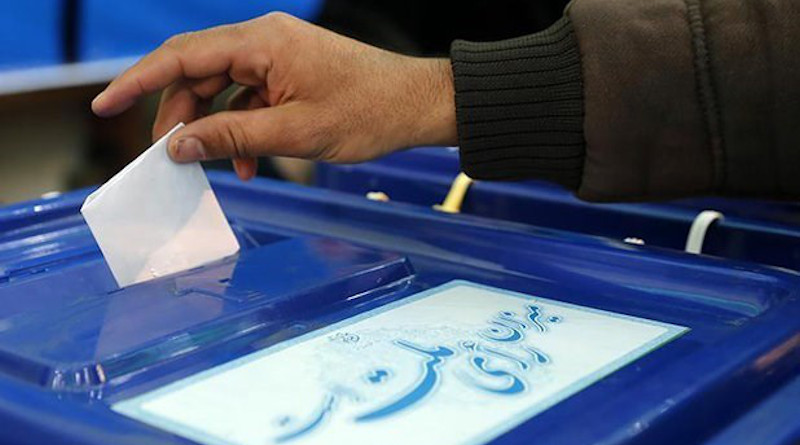
By Kian Sharifi
(RFE/RL) — The Islamic republic of Iran witnessed its lowest presidential-election turnout ever on June 28, when only around 40 percent of eligible voters cast their ballots.
None of the four candidates cleared to run in the election managed to secure enough votes to be declared the outright winner.
Reformist lawmaker Masud Pezeshkian, who took 42.5 percent of the vote, and ultraconservative former nuclear negotiator Saeed Jalili, who won 38.6 percent,;will face off;in a second round of voting on July 5 that will determine the next president of Iran.
The historic low turnout came despite calls by Supreme Leader Ayatollah Ali Khamenei for voters to show up in droves to cast their ballots, arguing that the “durability, strength, dignity, and reputation of the Islamic republic” were on the line.
Turnout in major elections has been declining since 2020, but opinion polls carried out in Iran had suggested that this election would not be as bad as the 2021 presidential election, which saw a then-record-low turnout of 48.8 percent.
The low turnout is “obviously a sign of the decreasing legitimacy of the Islamic republic,” said Farzan Sabet, a senior research associate at the Geneva Graduate Institute.
Ahead of the election, dissidents both in Iran and abroad had called for a boycott, arguing that past votes had failed to bring change.
Sabet said among a slew of factors contributing to the poor turnout was that a majority of the public “does not see elections as a meaningful path to change,” particularly when past presidents, such as the moderate Hassan Rohani, complain about having been blocked from carrying out their campaign promises by circles of power.
So, people question whether there is any point in voting if ultimately the government’s decision-making powers are limited, Sabet said.
Curtains On Qalibaf’s Presidential Aspirations
Another key takeaway from the election was the poor performance of conservative parliament speaker Mohammad Baqer Qalibaf, whose third-place finish in his fourth presidential run may have ended his aspirations to become president.
“In a sense, this might be the end of his rise in the system,” Sabet said. “Although he will go back to the parliament and continue to govern from there.”
The conservative camp had been urging Jalili and Qalibaf to come to an understanding for one of them to drop out in favor of the other to prevent the splitting of the conservative vote. Neither budged, however, and Qalibaf suffered for a couple of reasons.
Qalibaf found himself squeezed between Jalili, who appealed to more hard-line and ideologically committed voters, and Pezeshkian, who drew on the support of enough moderate and pro-reform voters to finish ahead of the pack.
The parliament speaker has also been embroiled in a series of corruption allegations and political scandals throughout his career, which may have damaged his reputation to such an extent that it could not be offset by his attempts to present himself as a competent, experienced manager with technocratic solutions.
Pezeshkian-Jalili Showdown
Pezeshkian initially was not seen as a serious challenger but as election day grew closer, his poll numbers soared.
Despite the low turnout, he managed to lure enough moderate and reformist voters out to secure a place in the runoff election.
Pezeshkian is a veteran lawmaker who backs engaging with the West and has been critical of some of Tehran’s conservative policies. But he is also committed to the principles of the Islamic republic and has vowed to follow Khamenei’s policies if elected.
Jalili, who is staunchly opposed to improving relations with the West, will be hoping to get Qalibaf’s votes after the parliament speaker endorsed him for the runoff. However, there is no guarantee that Qalibaf’s supporters will swing to Jalili.
The hard-liner Jalili has also surrounded himself with officials close to the administration of the late Ebrahim Raisi, whose death in a helicopter crash in May triggered the snap election to replace him.
The last time an Iranian presidential vote went to a runoff was in 2005, when the populist candidate Mahmud Ahmadinejad, who had finished second in the first round, beat the moderate hopeful Ali Akbar Hashemi Rafsanjani.
If turnout remains low and Pezeshkian fails to mobilize a larger portion of pro-reform voters, Jalili could win the July 5 poll.
To convince the disillusioned public to vote, Pezeshkian needs “a clear plan and distinct approach,” France-based political commentator Mojtaba Najafi told RFE/RL’s Radio Farda.
If Pezeshkian succeeds, he will have “a significant chance” of defeating Jalili, he said.
There is also a possibility that the prospect of a Jalili presidency is enough incentive to compel some to vote for Pezeshkian.
“I voted for Pezeshkian because I believe he is qualified, but also I was scared of Jalili becoming president,” a voter inside Iran said in a voice message to RFE/RL’s Radio Farda.
Sabet argued, however, that with the Iranian public having experienced the repressive Ahmadinejad and Raisi presidencies, “I’m not sure how much more frightening a Jalili administration will be.”
